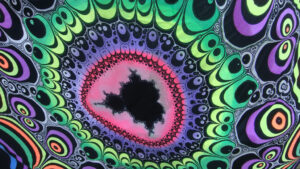By DANIEL VELASCO

N,N-Dimethyltryptamine, or DMT, is a naturally occurring psychedelic that’s in plants, animals and quite possibly, our brains.
This seemingly mystical and loud chemical has baffled and frustrated scientists for years sparking many theories as to why it exists.
Some claim that it’s the chemical responsible for the dreams we experience at night, or it’s the light we see when dying, or the substance itself is our third eye.
Mystical speculations aside, studies on DMT have been shown to offer more questions than answers. Psychological Medicine noted that in a study conducted on 122 recently admitted psychiatric patients and 20 normal subjects, DMT was detected in the urine of 47 percent of those diagnosed by their psychiatrists as schizophrenic.
While DMT has been found in humans, it’s also worth noting that DMT also is found in many plants.
Cultures, such as the Napo Runa of Amazonian Ecuador, combine different plants together to make a psychedelic “tea” that contains DMT. This tea is known as “ayahuasca.” It’s a combination of different plants, such as: B. Caapi, P. Viridis, J. Pectoralis, N. Rustica, and Brugmansia or Datura. While variations of this tea occur, what is universal is the way ayahuasca interacts with your brain.
When ingested, ayahuasca diminishes your brain’s “default mode network.” This region of the brain acts as a middle-man allowing for different areas of your brain to communicate with each other. This area of the brain is also associated with depression and anxiety.
The Drug Enforcement Administration states that because of ayahuasca’s harmala alkaloids, the alkaloids “harmine, harmaline and tetrahydroharmaline” inhibit the enzyme, monoamine oxidase which normally metabolizes DMT.
Because of this, DMT remains intact long enough to be absorbed in sufficient amounts to affect brain function and produce psychoactive effects.
The DEA also states that its effects include intense visual hallucinations, depersonalization, auditory distortions and an altered sense of time and body image. DMT is found in ayahuasca and works with proteins in your brain that allow for neurogenesis, neuroplasticity and memory.
The Multidisciplinary Association for Psychedelic Studies, or MAPS, in 2013 conducted research on this tea and found “ayahuasca-assisted therapy for stress and addiction was correlated with statistically significant improvements in mindfulness, empowerment, hopefulness and quality of life-outlook and quality of life-meaning.”
Further, in the study ayahuasca “contributed to statistically significant reductions in cocaine use.” International Center for Ethnobotanical Education, Research and Service, found that out of 32 people suffering from some form of “psychiatric disorder or some drug or alcohol abuse disorder,” only two reported psychiatric disorder after taking ayahuasca. In the same study, according to ICEERS, “Ayahuasca has also the reputation to be an efficient tool in the treatment of drug abuse disorders.”
While the medical use of ayahuasca is being examined, its natural role within our bodies remains unclear.
For years, there have been outrageous claims about DMT, such as the story of Moses being an allegory for the substance being smoked, or that the substance itself is secretly our “Third eye.”
Recently, the substance been found in the human body.
In 2017, at the Breaking Convention in London, on psychedelics, scientists came to discuss theories on what the natural role of DMT is within the body.
Dr. Ede Frecska from the National Institute of Psychiatry and Neurology in Budapest, Hungary, mentioned that DMT is found to bind to a brain receptor that helps protect cells from dying when oxygen is low.
Some have argued that this supports the hypothesis that DMT is released when you die, causing hallucinations of an afterlife. Also at this conference was Dr. Jimo Borjigin, associate professor in the Department of Molecular and Integrative Physiology and the Department of Neurology. Borjigin’s lab found that rats contain endogenous DMT within their pineal gland.
While DMT hasn’t been found in the human pineal gland, it’s worth noting that the pineal gland secretes melatonin in order to regulate our sleep cycles. This has been argued to support another hypothesis that DMT is responsible for our dreams.
However, given the amount of DMT found within our blood, it’s nowhere near enough to produce a psychedelic effect when it binds to the receptor (sigma-1) that helps protect cells from dying when oxygen is low. Given this information, the role of DMT within you remains a mystery.
